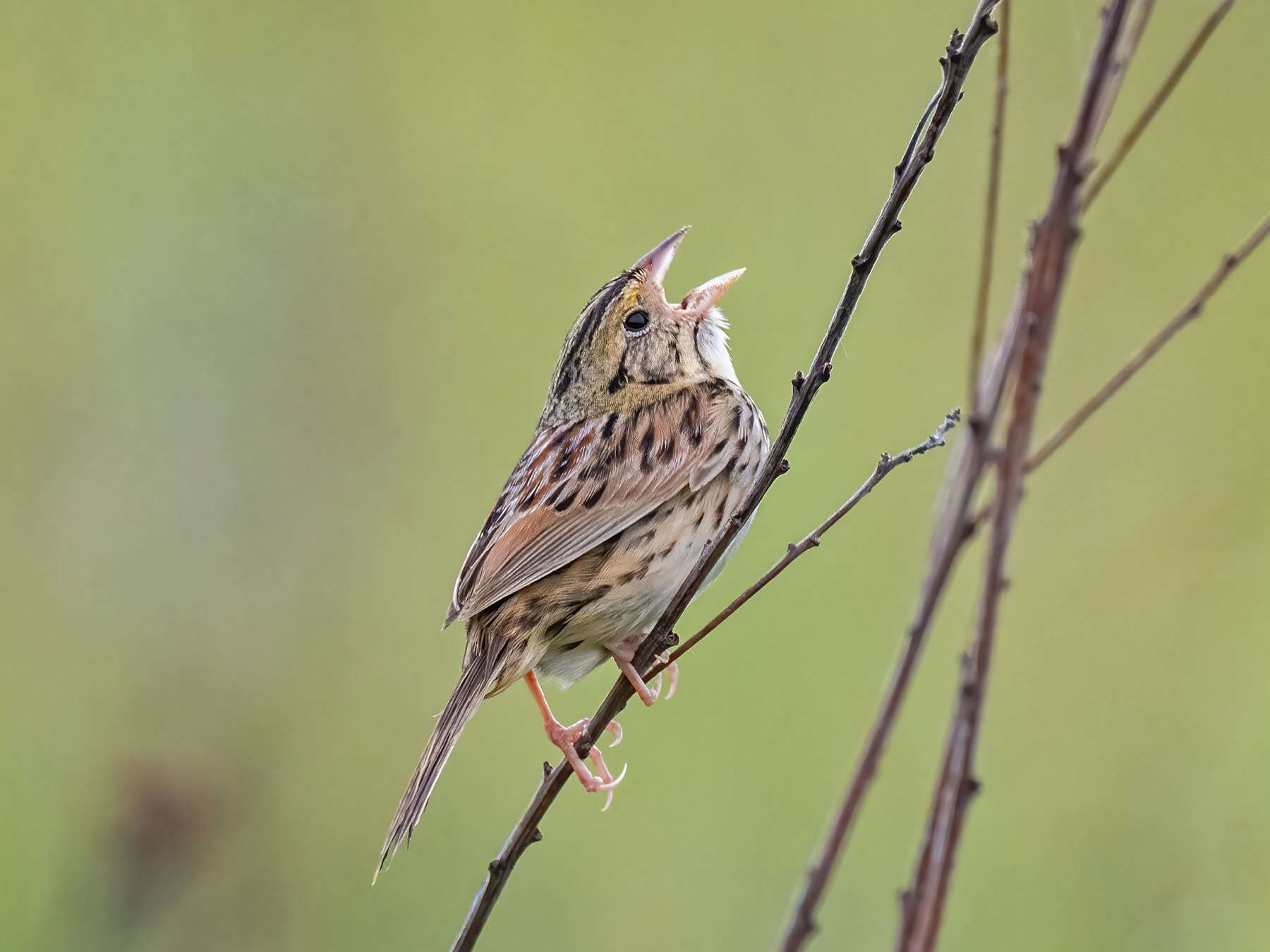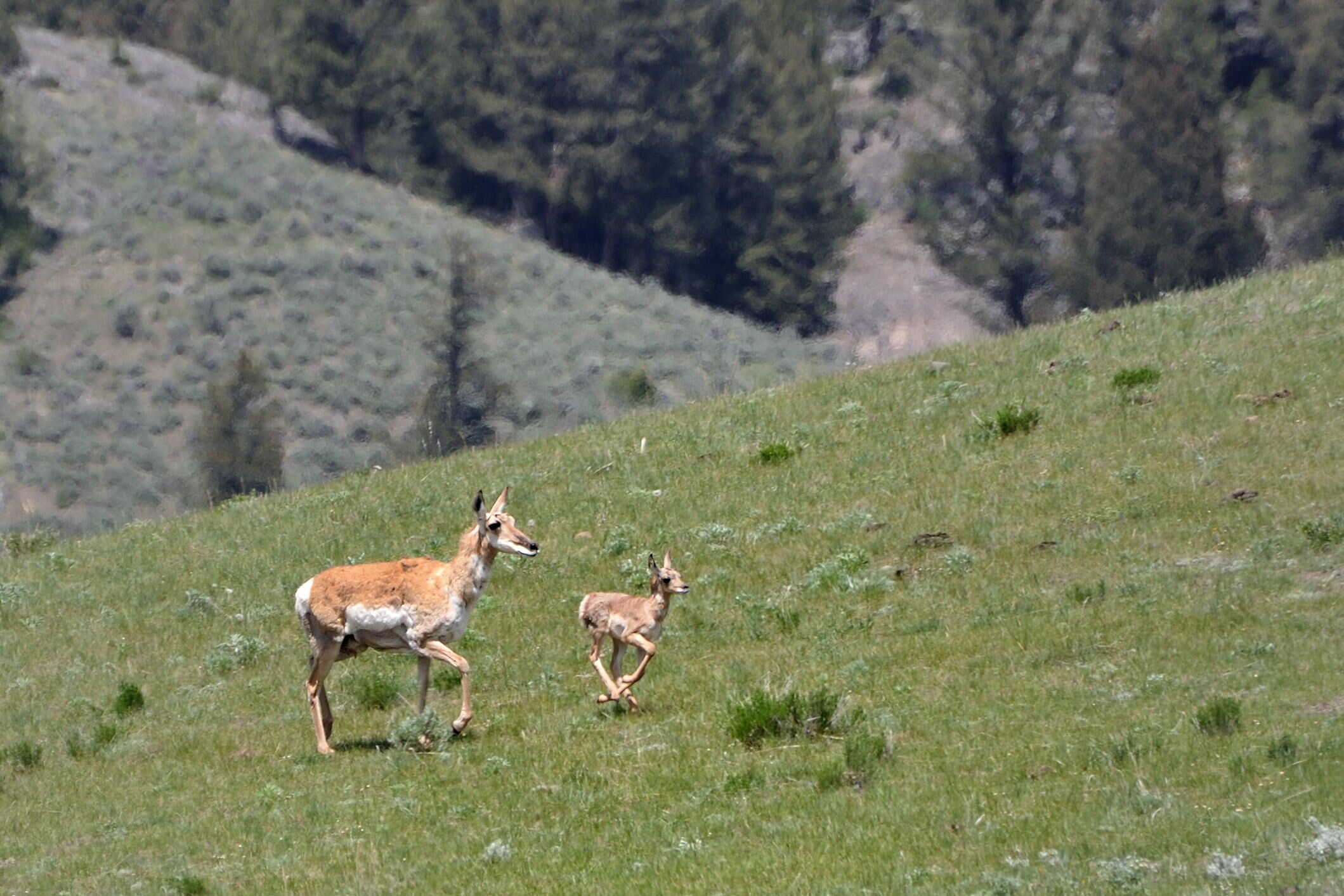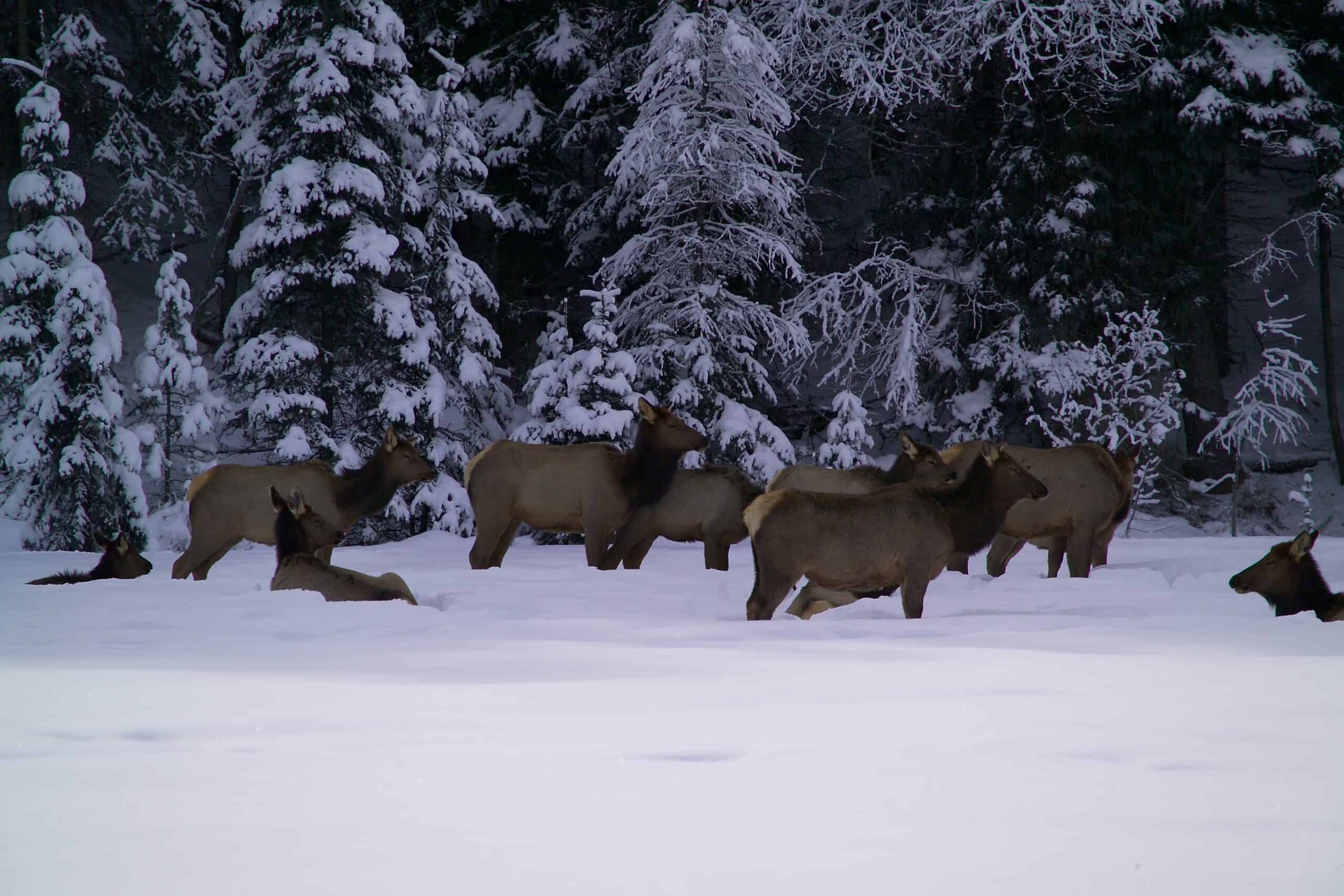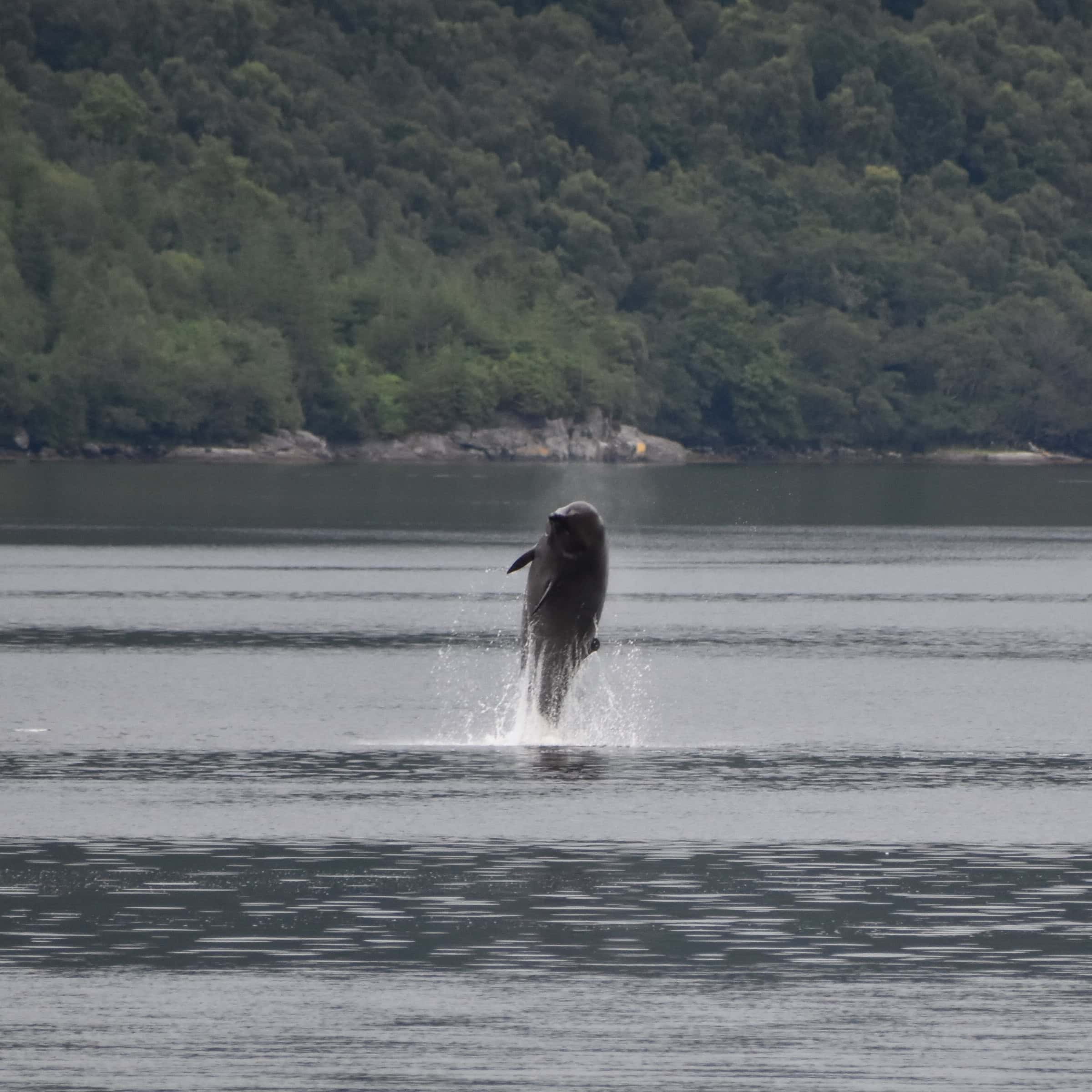Share this article
Wildlife Featured in this article
- Bison
- Upland sandpiper
- Henslow's sparrow
JWM: Bison, burns and birds
Reintroducing bison and prescribing fires can benefit grassland bird species
When bison and fire return to tallgrass prairies, grassland birds overall benefit.
In the Midwestern U.S., few remnant prairies remain. As Europeans colonized westward across America, they drove out Indigenous communities by killing off their main resource—bison (Bison bison). As colonizers forced Indigenous people off their land, the fire they kindled also stopped, and the new settlers converted most of the land to agriculture.
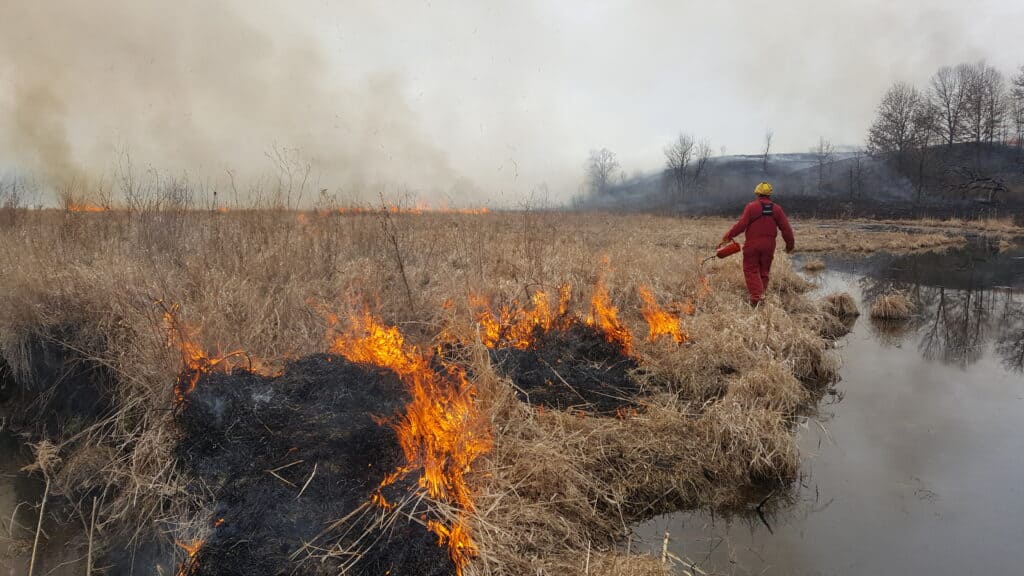
“If you think of ‘Smokey Bear,’ there’s been a negative attitude toward fire and what it does,” said TWS member Antonio Del Valle, a research coordinator with the Morton Arboretum.
But in recent years, some preserves have reintroduced bison and brought back prescribed burning to prairies. As a master’s student at Northern Illinois University at the time, Del Valle wanted to learn more about how these management strategies affected grassland birds.
Del Valle led a study published in the Journal of Wildlife Management looking at two particular preserves—one in Illinois and one in Indiana. The Illinois preserve started off as a tiny remnant patch of prairie. In the ‘70s, prairie enthusiasts Dot and Doug Wade heard what sounded like a rocket ship taking off—the unmistakable sound of an upland sandpiper (Bartramia longicauda). They tracked the noise to heavily grazed pastures, which they realized actually consisted of remnant tallgrass prairie plants. After discussion and interest from local and state conservation groups, The Nature Conservancy purchased the land and parts of the surrounding area.
The story of the Indiana preserve is a bit less positive. About an hour and a half south of Chicago, the preserve that was once a huge wetland and Indiana’s largest lake has been restored to a complex of tallgrass prairies, wetlands and savannas. Wetland birds used to stop over here before the land was drained for agricultural use. In recent years, the Nature Conservancy has worked on restoring this area, too.
During a lonely summer due to the COVID-19 pandemic in 2020, Del Valle conducted bird point counts, a common way to detect birds, in both of these areas to determine how prescribed fire and bison restoration influenced grassland bird presence. He also surveyed plants and vegetation in the surrounding area of each point count and made note of bison dung piles and measurements of wallows—areas of the ground indented from bison rolling around—to estimate bison abundance. “It’s like a dog on its back,” Del Valle said of wallowing. “This massive animal rolls around on its back, takes off all this topsoil, and leaves this shallow sandy depression.”
After analyzing his data, Del Valle and his colleagues found that grassland bird diversity was lowest in areas where managers recently burned prairies. That wasn’t surprising, Del Valle said, because frequent burns can create less dense vegetation, and some birds key into those areas while others don’t.
However, in areas that were recently burned—and had bison—bird diversity was higher. “Something happened with how bison are interacting with recently burned prairies that they’re mediating that decrease in diversity,” he said.
Del Valle and his colleagues also looked at individual bird species to see if grassland-obligate birds that use these areas for breeding habitat reacted to bison and fire. One species they keyed in on was the Henslow’s sparrow (Centronyx henslowii). The team found the species doesn’t like recently burned areas but does prefer dead vegetation, spending a lot of their time on the prairie floor. “If you come across their nests, they are made up of dead plant material,” he said. But these birds were prevalent in the areas where bison were present.
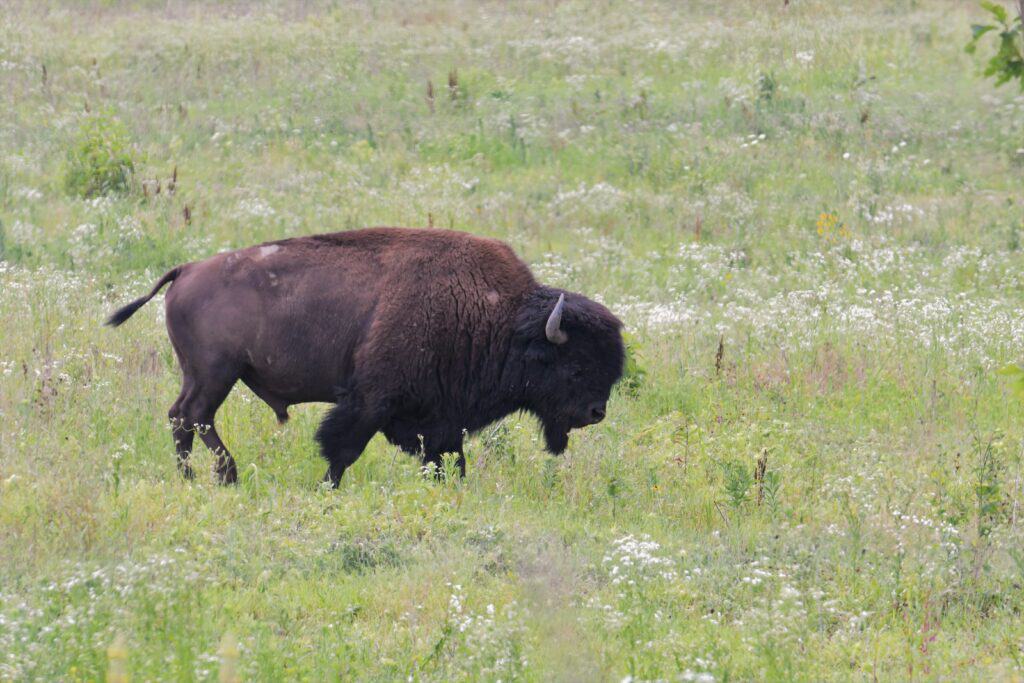
The team thinks bison may increase the diversity and abundance of insects that the sparrows need. Another possibility is that bison are creating paths where they walk that don’t burn and instead contain the dead material that the species prefers.
Del Valle said the management implications from his findings are a bit nuanced. Overall, fire is necessary to have prairies, he said, or the area will become shrubland or forest. But timing and how frequently fire is applied can vary based on management goals. And when it comes to reintroducing bison, it could also be a bit tricky. In larger preserves, it would make sense to add in bison. But in smaller prairies, bison could make the prairie more uniform, so not all species would benefit. “If you have too many bison, it will become a small patch of prairie that’s short and looks like lawn,” he said.
As for the two preserves Del Valle looked at, the managers are always looking for ways to improve the prairies and benefit more species that historically showed up there but Del Valle hadn’t documented in his work. “These preserves are excellent places for these rare birds,” he said. “Even though they’re missing a couple species, if they desire, they can tweak management to address that. There’s room for improvement, but they’re doing a great job.”
This article features research that was published in a TWS peer-reviewed journal. Individual online access to all TWS journal articles is a benefit of membership. Join TWS now to read the latest in wildlife research.
Header Image: Henslow’s sparrow prefer dead vegetation, spending time on the prairie floor. Credit: Charles Larry



